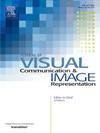Skeleton-guided and supervised learning of hybrid network for multi-modal action recognition
IF 2.6
4区 计算机科学
Q2 COMPUTER SCIENCE, INFORMATION SYSTEMS
Journal of Visual Communication and Image Representation
Pub Date : 2025-01-25
DOI:10.1016/j.jvcir.2025.104389
引用次数: 0
Abstract
With the wide application of multi-modal data in computer vision classification tasks, multi-modal action recognition has become a high-profile research area. However, it has been a challenging task to fully utilize the complementarities between different modalities and extract high-level semantic features that are closely related to actions. In this paper, we employ a skeleton alignment mechanism and design a sampling and skeleton-guided cropping module (SSGCM), which serves to crop redundant background information in RGB and depth sequences, thereby enhancing the representation of important RGB and depth information that is closely related to actions. In addition, we transform the entire skeleton information into a set of pseudo-images by mapping and normalizing the information of skeleton data in a matrix, which is used as a supervised information flow for extracting multi-modal complementary features. Furthermore, we propose an innovative multi-modal supervised learning framework based on a hybrid network, which aims to learn compensatory features from RGB, depth and skeleton modalities to improve the performance of multi-modal action recognition. We comprehensively evaluate our recognition framework on the three benchmark multi-modal dataset: NTU RGB+D 60, NTU RGB+D 120, and PKU-MMD. The results show that our method achieved the state-of-the-art action recognition performance on these three benchmark datasets through the joint training and supervised learning strategies with SSGCM.
求助全文
约1分钟内获得全文
求助全文
来源期刊

Journal of Visual Communication and Image Representation
工程技术-计算机:软件工程
CiteScore
5.40
自引率
11.50%
发文量
188
审稿时长
9.9 months
期刊介绍:
The Journal of Visual Communication and Image Representation publishes papers on state-of-the-art visual communication and image representation, with emphasis on novel technologies and theoretical work in this multidisciplinary area of pure and applied research. The field of visual communication and image representation is considered in its broadest sense and covers both digital and analog aspects as well as processing and communication in biological visual systems.
 求助内容:
求助内容: 应助结果提醒方式:
应助结果提醒方式:


